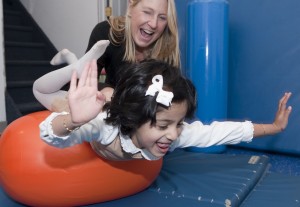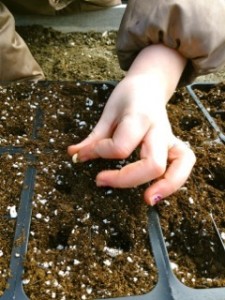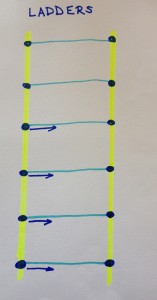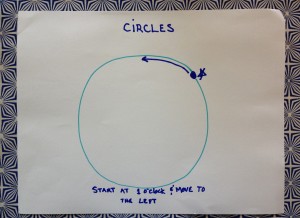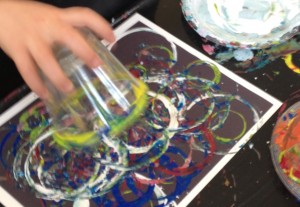This is when the real “pressure” begins. I’ve had many parents come to me in a panic because their three year old son refuses to color or the four year old still hasn’t learned to write her name. I respond, “Relax and feel great about all the outside play, make believe and other forms of play chosen instead.” Rarely does that calm folks down.
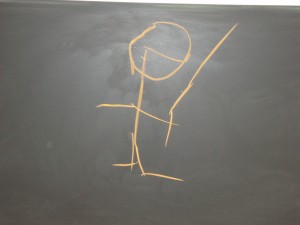 You see, they are confronted with a world where expectations have shifted in a terribly unhealthy way for kids. The parents have already heard from three dozen neighbors and friends that “their” sons and daughters not only write their names but have learned all the letters of the alphabet. Many in this camp come up to me and crow about these accomplishments. I stifle my automatic response, which is to say, “Oh that’s too bad..” and wanly smile and say something like, “Good for you…”
You see, they are confronted with a world where expectations have shifted in a terribly unhealthy way for kids. The parents have already heard from three dozen neighbors and friends that “their” sons and daughters not only write their names but have learned all the letters of the alphabet. Many in this camp come up to me and crow about these accomplishments. I stifle my automatic response, which is to say, “Oh that’s too bad..” and wanly smile and say something like, “Good for you…”
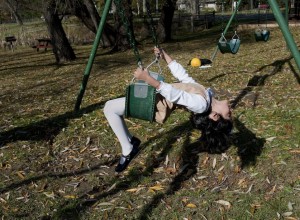 Three and four year olds are suppose to use their imaginations, use big muscles to play hard and explore the world using all their senses. When they sit at a table scratching away at making little lines and circles to form letters, they are missing out on time better spent working on exploring physical prowess and developing a sense of autonomy. And since their fingers are not physically ready to hold and manipulate a pencil properly, they develop bad habits that are very hard to break.
Three and four year olds are suppose to use their imaginations, use big muscles to play hard and explore the world using all their senses. When they sit at a table scratching away at making little lines and circles to form letters, they are missing out on time better spent working on exploring physical prowess and developing a sense of autonomy. And since their fingers are not physically ready to hold and manipulate a pencil properly, they develop bad habits that are very hard to break.
Oh well…
Here’s the formula to success:
- Find activities that are fun and the child takes a particular interest in. If an activity requires hand use, skill building for handwriting automatically occurs. You simply need to direct their hands in a way that develops the muscles and movements critical for writing later on.
Activities that stretch the thumb away from the hand
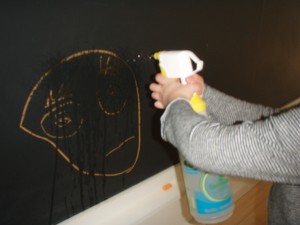 Plant Sprayers
Plant Sprayers- Dot Art
- Wooden Stamps
- Scissor Activities (supervised)
- Simple Sous Chef Tasks (supervised)
- Tubes
- Trigger Toys
Activities that require pointing of the index “Pointer Finger”
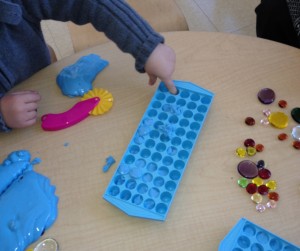 Shaving cream and Finger paints
Shaving cream and Finger paints- Play Dough
- Gak
- Gardening
Activities that use a Pincer Grasp
- Planting Seeds
- Bead stringing
- Coin Banks
- Duplo and other Construction Toys
Activities that use two hands
- Clapping
- Ball Games
- Balloon Bopping
- Tubes
- Stencils
- Crawling
- Scooters and Plungers
Activities that require the eye to direct the movement of the hands
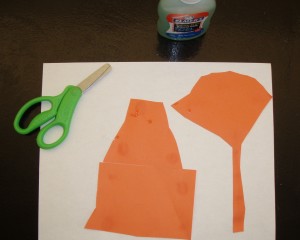 Scissors
Scissors- Puzzles
- MagnaDoodle
- Dot Art
- Simple Board and Card Games
- Simple Mazes
- Construction toys (e.g. LEGO)
Visual Activities that facilitate paying attention to pictures and visual details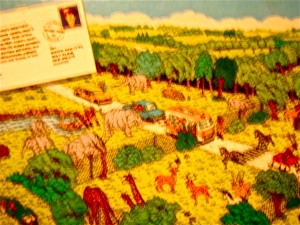
- I Spy, Where’s Waldo and other Figure Ground Games
- Gardening
- Puzzles
- Picture Books
Drawing can be encouraged in large spaces such as side walks and big chalk boards.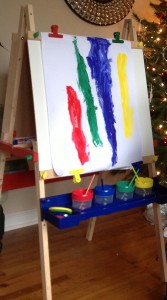
- Smaller spaces such as easels, and large pieces of paper can be used.
- Allow your child to scribble and have fun.
- NO JUDGEMENT ATTACHED!
Directed drawing can begin if the hand can comfortably hold a fat marker or chunky chalk. Here’s the progression to ensure later success in writing:
 To help get started, Race Car Tracks are fun!
To help get started, Race Car Tracks are fun!
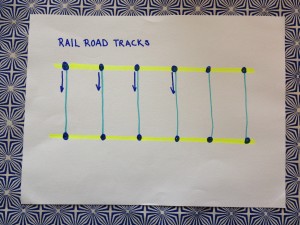 Draw downward strokes. Always start at the top and draw down. I always demonstrated by saying, “Down!” to give a sense of the movement, like jumping down.
Draw downward strokes. Always start at the top and draw down. I always demonstrated by saying, “Down!” to give a sense of the movement, like jumping down.
Draw circular strokes. Begin at the top and draw in a leftward direction (counter-clockwise).
- After the child draws these fairly well, (this can take weeks, maybe months…) you can move on to combined strokes.
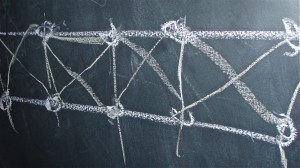 Once your child becomes a pro at all of the above, try diagonal lines. These will begin more like a curve. Here is a drill to help get a straighter line.
Once your child becomes a pro at all of the above, try diagonal lines. These will begin more like a curve. Here is a drill to help get a straighter line.
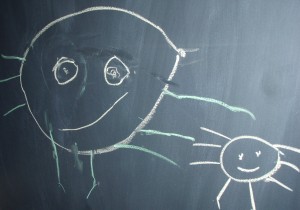 As the child progresses with each phase you can begin to model simple objects, easy to draw, to give the sense of how lines and shapes combine to create images.
As the child progresses with each phase you can begin to model simple objects, easy to draw, to give the sense of how lines and shapes combine to create images.
- Really the child does not need to learn to write any letters at this age (and better for the hands if they didn’t) but if you can’t help yourself, and/or you have an “Eager Beaver” on your hands, here are the easiest letters to introduce:
O C H E F I L T U
Note that these are upper case. Other letters should not be attempted until diagonals are drawn quite accurately. At that point you can try:
K M N V W X Y Z
Keep in mind if you venture into practice writing:
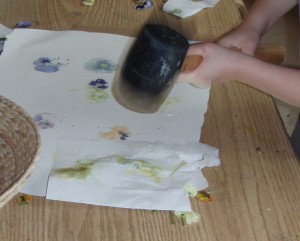 Developmentally children just begin forming symbol recognition during the preschool years. They learn the language of labeling letters but the understanding of the underlying symbol usually comes later (Remember, Einstein learned to read quite late).
Developmentally children just begin forming symbol recognition during the preschool years. They learn the language of labeling letters but the understanding of the underlying symbol usually comes later (Remember, Einstein learned to read quite late).- Certain muscles in a child’s hand do not get activated until between the age of four and six. That means it might be physically impossible for the child to hold a pencil correctly. When that happens they use all kinds of crazy grasps and usually they are strengthening the wrong muscle groups. So, it makes it super hard later to unlearn this pattern and build the strength in the correct muscle groups.
- A creative art project will bring so much more joy and long term benefit to those little hands and minds!

